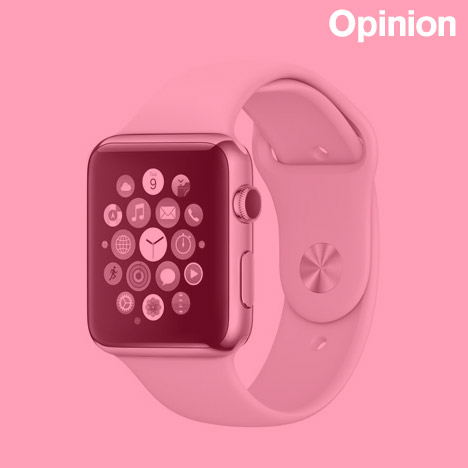
"Apple has taken the minimal aesthetic too far"
Opinion: Apple's latest launches show it has become reactive rather than innovative, but after leading the market for 30 years it could still have an important role to play, says Karim Rashid.
Ever since I bought my first Mac 128k in 1985 I have been devoted to the "church of Apple". It perpetually innovated and always stayed clear of marketing swagger. Apple drove trends in design and technology and finally managed to create such a distance between itself and the rest of the computer and PC world that it seemed invincible.
Charles Eames said that design creates its own market. I say a great concept creates a world market. Apple proved this time and time again. It drove the market for almost 30 years, without question.
With everyone chasing the same outputs and technologies becoming ubiquitous and omnipresent in many companies, we have now reached a point where design has become the only real brand differentiator in technology. And with design Apple seemed to know instinctively what we wanted.
Over the years it shaped a beautiful world of seductive, minimal yet experimental industrial design. It shifted materials, played with transparencies and colours, and cleaned up the image of the high-tech product. Apple removed unsightly vents, hid plugs, and worked on every infinitesimal physical detail to shape friendly plug and play phenomena. It was truly the cultural shaper of our digital era.
But recently I've begun to feel like it has lost some of this magic. Apple has taken the "minimal" aesthetic too far and lost some "play with the human spirit"– a certain friendliness has gone. The products have become similar to the PC world, more monochromatic, less friendly, more generic and emotionless.
Instead of predicting what we want and showing us what we didn't know we needed, Apple has begun reacting to the perceived needs of existing users, trying to catch up and placating the market with bigger versions of old products instead of innovating with something new. Or coming out with generic derivatives like the new watch.
The Apple Watch could have had a curved screen, an innovative strap, maybe hang as a necklace, maybe include diverse new innovative detailing, new material finishes, etc – so much could have been done, but wasn't.
Consumers' needs and desires are unpredictable and it is the shock of the new that gave Apple its zenith. I always asked these questions to the manufacturing landscape: are companies really interested in people and in culture? Do manufacturers discuss personal rituals, the depths of private relationships, the warmth of family, the codes of love, the signs of human emotions, the regard for happiness, freedom, personal expression, the well being of our human existence?
For a long time I thought Apple took these questions into consideration, addressing these questions through the products it sells. But now Apple seems myopic and is only concerned about its contribution to the marketplace, revisions of past archetypes, watching its competition and generally being too derivative instead of focusing on differentiation and removing oneself from the plethora of sameness. For so long it was the only company searching for an exclusive language that would set it apart but that era seems to be fading.
Design has had a great affect on progress, communication, the global economy and on our human psyche. Yet our human experiences are becoming less apparent and products around us have taken on a banality and certain sameness due to rapid mass-production, lack of risk, shortened time for research and development, lack of interest in a cultural significance, low-capital investments, all due to the great mass mechanisation of the 20th century. Apple has become a victim of this too.
Businesses can only be holistic and comprehensive if they are able to address these issues, keep their brand values and focus on their own vernacular. Again design is the only brand differentiator we have today.
Apple has the ability to create simple objects that imbue beauty into a person's life. I see the future of our aesthetic world crossing all the aesthetic disciplines so that design, art, architecture, fashion, food, music, fuse together to increase our experiences and bring greater pleasure to our material and immaterial lives. And Apple should lead the way between technology, culture, design, and take us along the path of immateriality.
Karim Rashid is an industrial designer and interior architect. His designs include the Kaj and Jak watches for Italian brand Alessi, the Snoopy and Woopy chair, luxury goods, furniture, lighting and surface design.